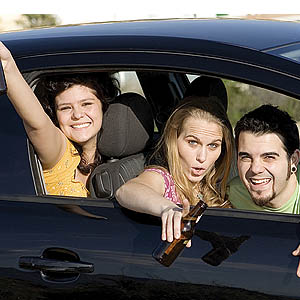However, despite this marked decline there is still no reason to assume teens are safe behind the wheel. Motor vehicle crashes remain the leading cause of death for teenagers and repeated public safety announcements and safe driving education are simply not making a dent in this number. So, while it may not be drunk driving which causes the problem, teens and cars are still a dicey situation for any parent.
And the decline doesn’t mean there isn’t still temptation for teens to drink and drive. In fact, because the numbers started so high the 50 percent decline still leaves a number of teenage drivers, and anyone who rides with them or shares the road with them, at a high risk of being involved in a traffic fatality.
The CDC report showed that during each month of 2011 there were more than 2 million incidents of teens caught drinking and driving. That’s still a high number of chances for there to be a serious incident.
These numbers are also reflective of a more general problem with teens and alcohol. The CDC says that 85% of students who admitted to driving after drinking also participated in binge drinking in the past 30 days. Teenagers are not legally permitted to consume alcohol in any state, so the fact they are actually admitting binge drinking seems to indicate they are not only finding access to alcohol but also consuming large quantities of it.
Some of the more specific findings of the report are as follows:
– 10.3% of teens reported drinking and driving in 2011, compared to 22.3% in 1991.
– 11.7% of male students were more likely to be drinking and driving, compared to 8.8% of female students.
– Hispanic (11.5%) and White students (10.6%) were more likely to drink and drive than African-American students (6.6%)
– 7.2% of 16-year-olds reported drinking and driving, which increased to 11.5% among 17-year-olds. Among students who reported drinking and driving, 84.6% reported binge drinking, defined as consuming five or more drinks in a row.

 Live Chat
Live Chat






